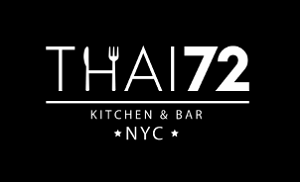Muffins
- 500 Degrees Pizzeria
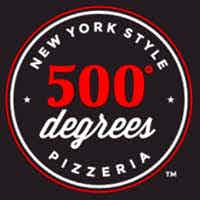 Open Now$6.49 Delivery5.0
Open Now$6.49 Delivery5.0 - 3 Brothers Pizza & DeliOpen Now$2.00 Delivery4.7
- Chef David's Pizza & More
 Open Now$3.50 Delivery4.6
Open Now$3.50 Delivery4.6 - Gigi's New York Style Pizza & Restaurant
.png?auto=format&fit=max&q=10) Open Now$6.90 Delivery4.8
Open Now$6.90 Delivery4.8 - Massimo Italian Corner
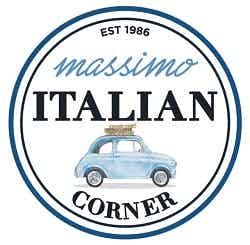 Open Now$4.95 Delivery4.8
Open Now$4.95 Delivery4.8
- 500 Degrees Pizzeria
 Open Now$6.49 Delivery5.0
Open Now$6.49 Delivery5.0 - 3 Brothers Pizza & DeliOpen Now$2.00 Delivery4.7
- Chef David's Pizza & More
 Open Now$3.50 Delivery4.6
Open Now$3.50 Delivery4.6 - Gigi's New York Style Pizza & Restaurant
.png?auto=format&fit=max&q=10) Open Now$6.90 Delivery4.8
Open Now$6.90 Delivery4.8 - Massimo Italian Corner
 Open Now$4.95 Delivery4.8
Open Now$4.95 Delivery4.8 - La Stella Pasta & PastryOpen Now$4.00 - $14.00 Delivery5.0
- The Beacon Diner (Formerly The Point Diner)
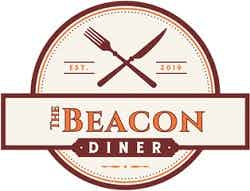 Open NowFree Delivery4.8
Open NowFree Delivery4.8 - B&W Deli and Pizzeria
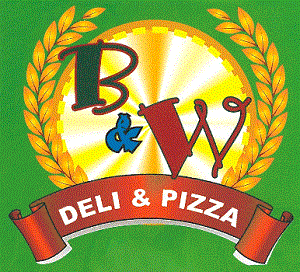 Open Now$5.50 Delivery4.8
Open Now$5.50 Delivery4.8 - Cafe Paradiso
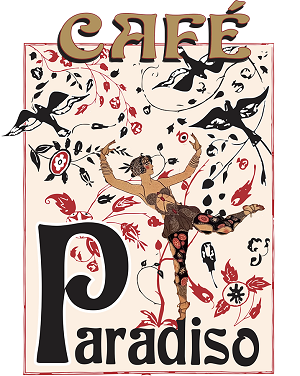 Open Now$3.50 Delivery4.2
Open Now$3.50 Delivery4.2 - Jersey Bagel Cafe & PizzaOpen Now$2.00 Delivery4.7
- Bleecker's Finest DeliOpen Now$6.45 Delivery4.5
- Maples Family RestaurantOpen NowFree Delivery4.8
- Khyber Grill & Gyro
.jpg?auto=format&fit=max&q=10) Open Now$4.95 Delivery4.4
Open Now$4.95 Delivery4.4 - FiammaOpen Now$4.95 Delivery3.6
- NY Deli Pizza & Cafe
 Open Now$6.45 Delivery
Open Now$6.45 Delivery
Best Muffins in Baltimore
- Massey's Pizza
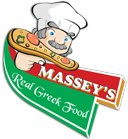 Open Now$1.95 Delivery4.0
Open Now$1.95 Delivery4.0
- Massey's Pizza
 Open Now$1.95 Delivery4.0
Open Now$1.95 Delivery4.0
Best Muffins in New York
- B&W Deli and Pizzeria
 Open Now$5.50 Delivery4.8
Open Now$5.50 Delivery4.8 - Cafe Paradiso
 Open Now$3.50 Delivery4.2
Open Now$3.50 Delivery4.2 - Bleecker's Finest DeliOpen Now$6.45 Delivery4.5
- NY Deli Pizza & Cafe
 Open Now$6.45 Delivery
Open Now$6.45 Delivery - 72nd EateryOpen Now$6.45 Delivery4.8
- B&W Deli and Pizzeria
 Open Now$5.50 Delivery4.8
Open Now$5.50 Delivery4.8 - Cafe Paradiso
 Open Now$3.50 Delivery4.2
Open Now$3.50 Delivery4.2 - Bleecker's Finest DeliOpen Now$6.45 Delivery4.5
- NY Deli Pizza & Cafe
 Open Now$6.45 Delivery
Open Now$6.45 Delivery - 72nd EateryOpen Now$6.45 Delivery4.8
- Ray's Pizza & Bagel Cafe
 Open NowFree Delivery4.5
Open NowFree Delivery4.5 - Bagels & Co
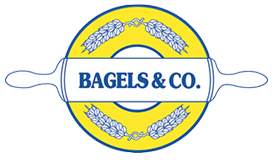 ClosedFree Delivery5.0
ClosedFree Delivery5.0 - Bagels & Co
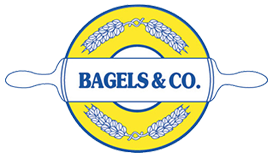 ClosedFree Delivery4.8
ClosedFree Delivery4.8
How Do You Describe Muffins?
Who can say no to a toothsome dessert, right? Well, get your taste buds ready because today we have an irresistible sweet - enter muffins!
Before we get into describing them, take note that there are two distinct types of muffins. That would be the American and English muffins.
In this post, we'll focus on the American version, though, of course, we'll explain the English ones, too. And also take a look at some other notable variants.
The American muffins are a quickbread that is baked and has the shape of a cupcake. They're usually sweetened and contain ingredients such as blueberries, chocolate chips, nuts, bananas, and others.
In short, we can describe them as small, domed, and spongy.
To be more specific, the preparation method includes sieving the flour with a leavening agent. This is then mixed with eggs, butter, and other items for flavor - like chocolate or the aforementioned fruits.
Moreover, muffin pans are used to mold and bake the muffins. These typically have space for 12 muffins, each cup being 3.5 fl oz.
The process goes by pouring the muffin batter into the cup-sized bowls in the pan. And to further prevent the batter from sticking, cooking spray or butter may be added to the surface.
What plays into the look of this snack is the so-called muffin top. This is the top part of the muffin which features a slightly burnt crust around the sides.
The muffins also have a distinct texture which can be described as coarse, grainy, and damp.
Other than sweetened, muffins can also be savory. These include ingredients like cheese and corn.
When Were Muffins First Invented?
The first clues for the history of the muffin come from the name itself.
One suggested option is that the term is connected to the Greek dish "maphula" - a breadcake made on a griddle. Another one ties it to the word "mou-pain" which comes from Old French and means soft bread. It's possible that this word got turned into "mouffin."
As for written records, the earliest one is from 1703. And it was spelled as "moofin." There's also the term "muffin-man" which was used in a poem from 1754. It referred to a person selling muffins on the street.
Muffin recipes were often featured in American cooking books from the 19th century.
One example is "The Boston Cooking-School Cook Book" from 1896, as written by Fannie Farmer. In there, she included recipes for muffins either made with yeast or a quickbread. Her suggestion was to use muffin rings and cook them on the stovetop rather than in the oven.
Muffins: Fun Facts
- Attesting to their popularity and how much people love them, some states have declared to have their own official muffins. Thus, blueberry muffins are the official of Minessota, corn muffins of Massachusetts, and apple muffins of, you guessed it, New York.
- There's a famous nursery rhyme called " The Muffin Man" which originated in 1820.
- An episode of the popular sitcom Seinfeld was centered around muffins. It was titled "The Muffin Tops."
What Are the Most Popular Flavors of Muffins?
As mentioned earlier, there are two main types of muffins. We have discussed the American ones, but there are also the English muffins. But that's not all. Depending on the flavor, there are multiple varieties of the American muffin.
To present it more concisely, we have:
- English muffins - Flat, small, and round bread, leavened with yeast, baked on a griddle, and has a spongy texture on the inside. It is usually put on toast and topped with ingredients such as honey or bacon.
- Bran muffins - Made with bran, molasses, brown sugar, and oven-baked. May also include milk, cinnamon sugar, nuts, and others.
- Poppyseed muffins - Contain poppy seeds.
- Blueberry muffins
- Chocolate chip muffins
- Banana muffins
- Lemon muffins
Do Muffins Have a Lot of Calories?
One medium-sized muffin (113g) contains about 424 calories. This includes 18g of total fat or 23% of the daily value based on a 2000-calorie diet. In addition, there are 34mg of cholesterol, 380mg of sodium, 5g of protein, and 60g of total carbohydrates. Plus, there are 50mg of calcium, 1.5mg of iron, and 137mg of potassium.
Where Can I Find Muffins Near Me?
As always, we at Slice are here to help you find any dish near you. And muffins are certainly no expectation.
Hence, for those of you in New York, we recommend Bagels & Co. They're located on York Ave and also offer pickup and delivery. What's great is you save 10% on any online order via the Slice app.
Browse More Dishes
EVEN MORE DISHES NEAR YOU
Turkey Bacon
•Double Chocolate Cake
•Cheesesteak Sub
•Greek Salad
•Chilli Cheese Fries
•Espresso
•Chicken Francese
•Chicken Roll
•Tuna Salad Sandwich
•Gyro Wrap
•Vegetarian Wrap
•Pierogies
•Italian Calzone
•Tomato Soup
•Belgian Waffle
•Hummus
•Chicken Parm Sandwich
•Meatball Sandwich
•Mozzarella Pizza
•Lentil Soup
•Crab Cake Sandwich
•Creme Brulee Cheesecake
•Tater Tots
•Roasted Beet Salad
•Asian Chicken Salad
•New York Cheesecake
•Chicken Strips
•Chocolate Chip Cannoli
•Olive Pizza
•Rib Tips
•Ham Calzone
•Philly Cheesesteak
•Mostaccioli
•
.jfif?auto=format&fit=max&q=10)

.jfif?auto=format&fit=max&q=10)
